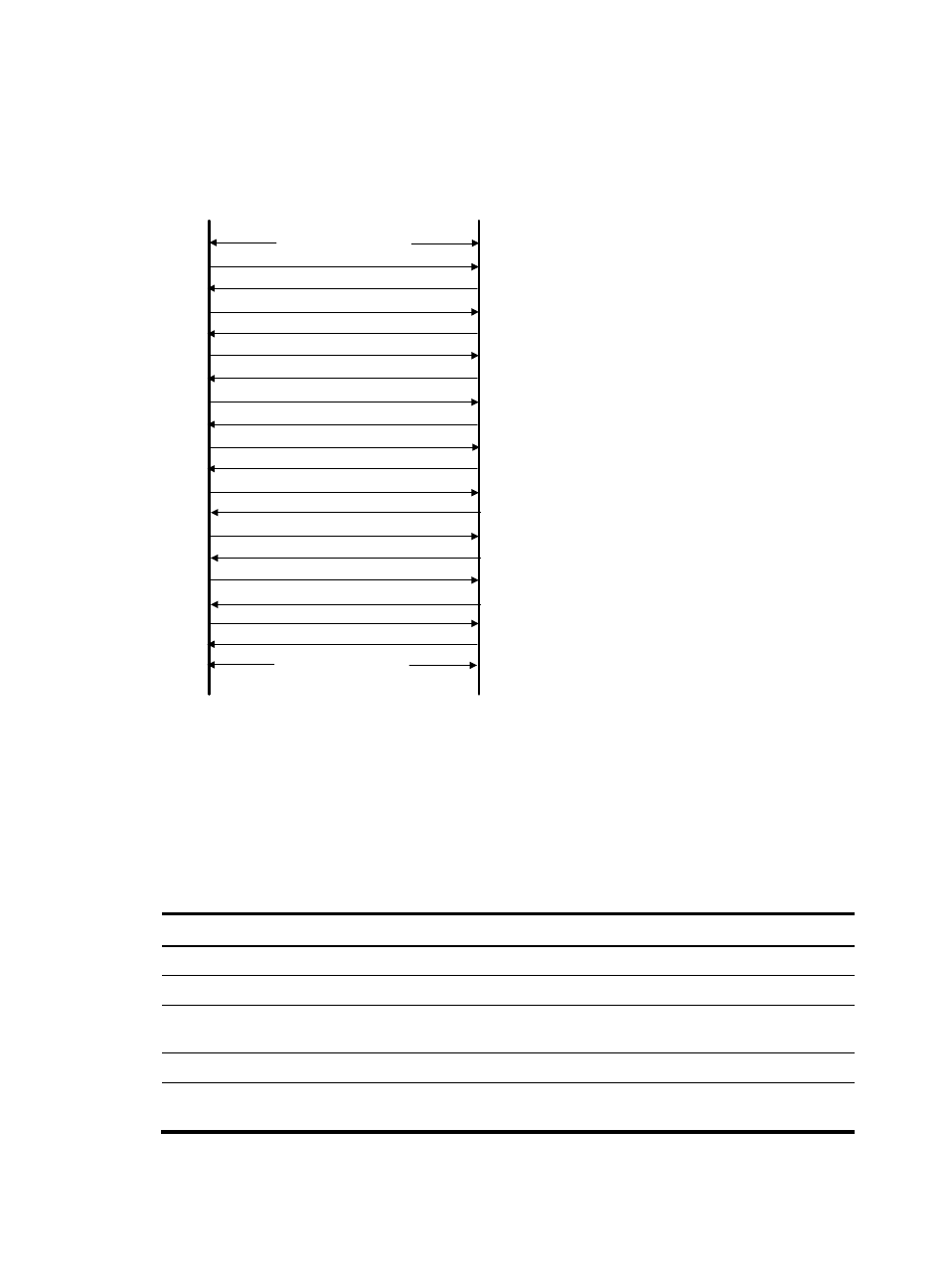Configuring basic r2 signaling parameters, Configuring the r2 signaling standard – H3C Technologies H3C MSR 5600 User Manual
Page 49

39
shows the exchange process requesting calling party information, which is typical of R2
interregister signaling.
Figure 19 ITU-T R2 interregister signaling exchange process
Configuring basic R2 signaling parameters
Configuring the R2 signaling standard
For the device to perform R2 signaling exchange with devices in a specific country or region, you need
to specify the R2 signaling standard of that country or region.
To configure the R2 signaling standard:
Step Command
Remarks
1.
Enter system view.
system-view
N/A
2.
Enter E1 or T1 interface view. controller { e1 | t1 } number
N/A
3.
Create a timeslot set and
enable R2 signaling for it.
timeslot-set ts-set-number
timeslot-list timeslots-list signal r2
By default, no timeslot set is
created.
4.
Enter R2 CAS view.
cas ts-set-number N/A
5.
Specify the R2 signaling
standard.
mode zone-name
[ default-standard ]
By default, the ITU-T standard is
adopted.
Line signaling exchange
Originating side
Terminating side
Calling number: 123
Called number 789
Send called number digit 7 (I-7)
Request next digit (A-1)
Send called number digit 8 (I-8)
Request calling party information (A-5)
Send calling accounting category 2 (II-7)
Request calling party information (A-5)
Send calling number digit 1 (I-1)
Request calling party information (A-5)
Send calling number digit 2 (I-2)
Send calling number digit 3 (I-3)
Send number terminator (I-15)
Request next digit (A-1)
Send called number digit 8 (I-9)
All digits are received completely (A-3)
Send calling service category 2 (II-2)
Subscriber idle and charging starts (B-6)
Line signaling exchange
Request calling party information (A-5)
Request calling party information (A-5)
